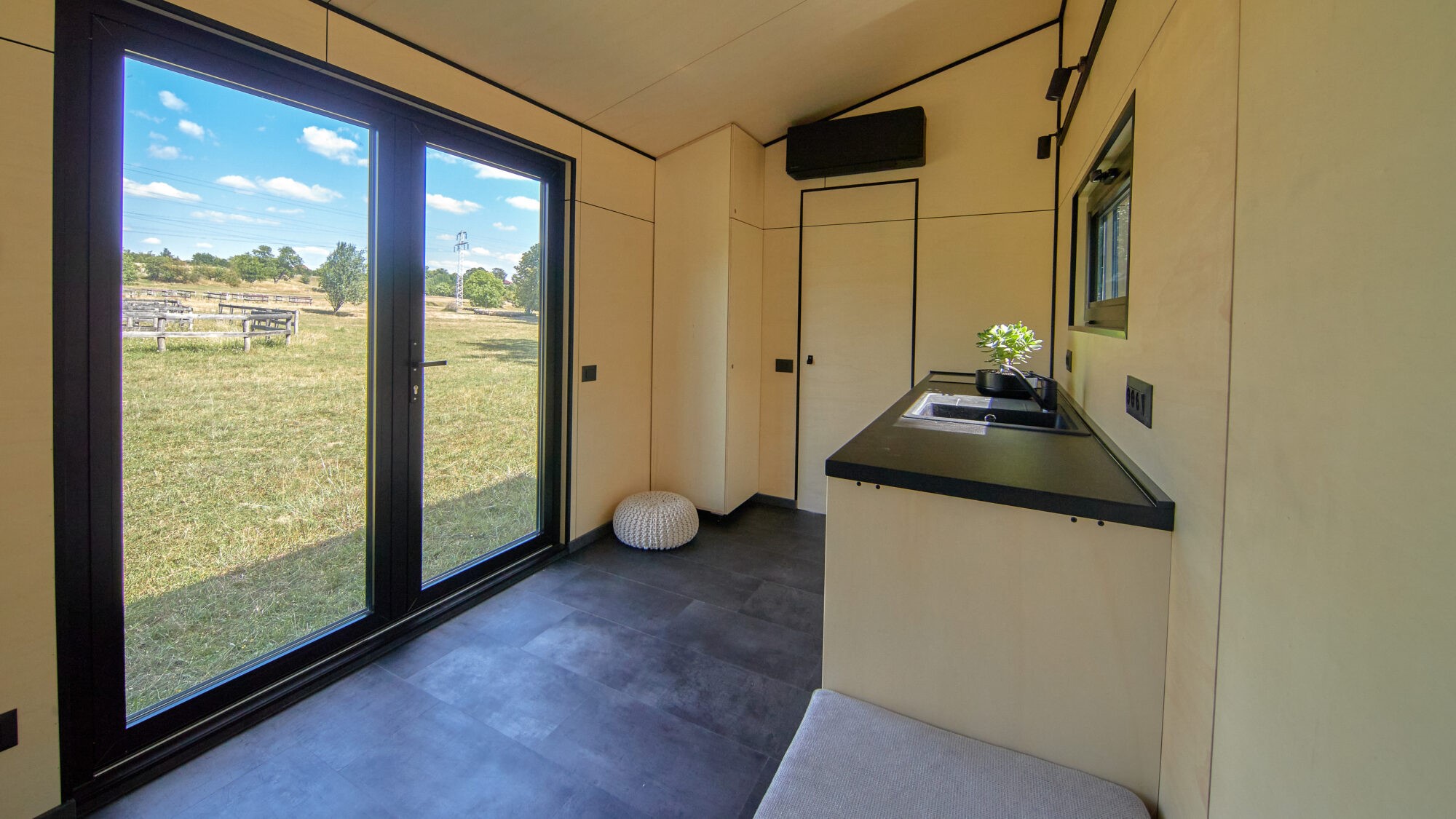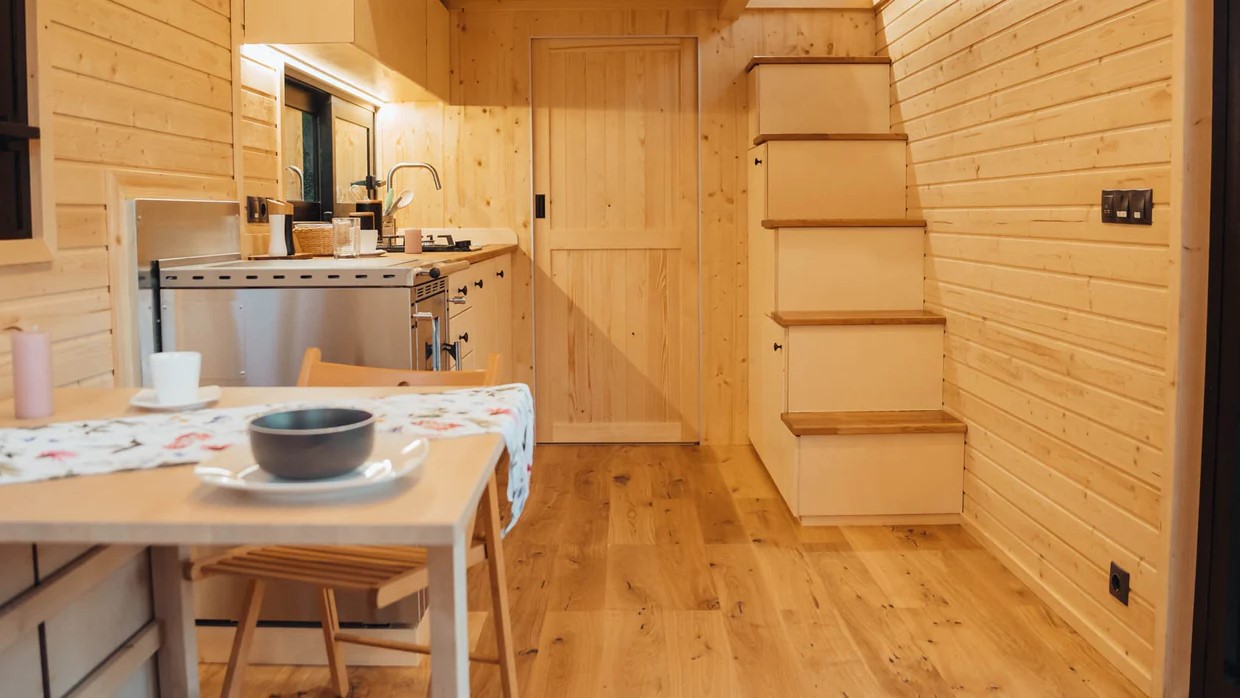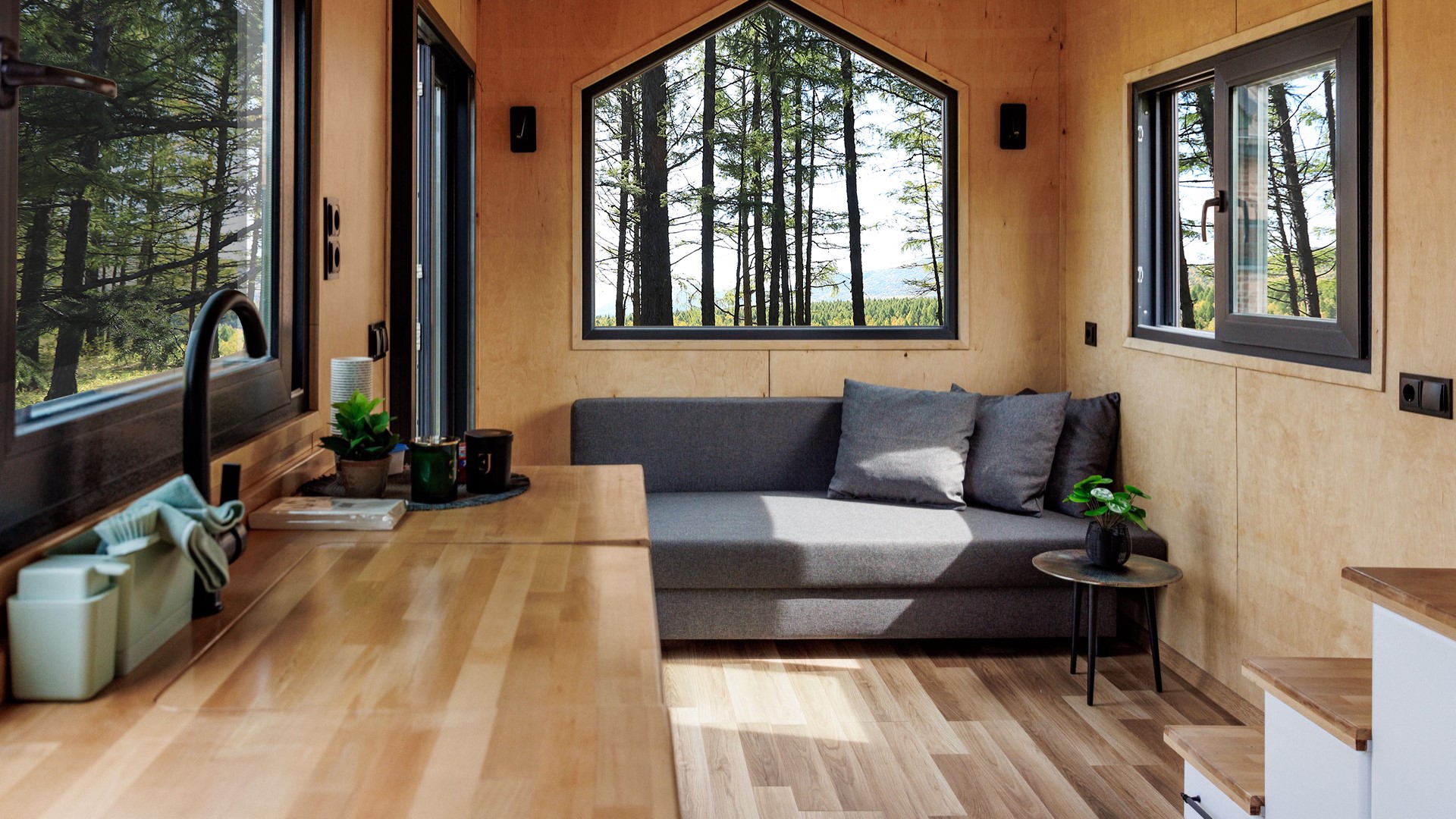When designing the interior of a Tiny House, a lot of attention is often paid to the vertical space. Optimal use is smart, so you make the most of your limited square meters. But choosing a beautiful but also robust floor is just as important. Does every type of floor that you might encounter in a regular home also fit in a Tiny House? That depends on a number of factors. For example, whether you should take the weight of your floor covering into account, whether you have underfloor heating and whether you build ecologically. Let’s go through some points of interest.

A floor that lasts
First of all, it is good to remember that the floor of your small house is used frequently, and that it can therefore withstand maximum wear and tear. In a small home you simply move more over a smaller surface and therefore your floor has to endure a bit more strain than in a larger home. So choose a floor that is wear-resistant, for example Linoleum.
It is a good idea to provide certain parts of your floor with extra protection against wear and moisture. Do you have a workplace at home? Then you can place a transparent plastic mat under your office chair. That spot is always very sensitive to wear and tear. Do you have pets and is there a water bowl in the house? Place a placemat underneath so that splashing water does not damage your beautiful floor.

A lightweight floor
If you have a Tiny House On Wheels, weight is an important factor when choosing your floor. When every kilo in the interior counts, there are still quite a few options for your floor covering. Cork, PVC and vinyl are materials that are relatively lightweight. A wooden floor is a less obvious choice, but if you really want a wood look you could choose laminate, which is lighter than a (hard)wood floor. Remember that the subfloor must also be taken into account. Obviously, a stone floor is out of the question if you want to build lightly.
A sound-absorbing floor
Speaking of laminate: keep in mind that it can sound quite loud in a Tiny House when you walk on a laminate floor. The same applies to wood, tile floors and cast floors. If sound insulation is important to you, it is better to choose cork, PVC or linoleum.

A maintenance-friendly floor
It quickly gets dusty in a small house, so a floor that is easy to clean and where you don’t see everything at once is nice. A plain floor is a lot more contagious than a floor with a ‘work’. Carpet is actually not a good choice because it is not very durable and difficult to clean. You could use it in your (sleeping) loft, where you don’t walk on it. You are less likely to see dirt on cork, but a PVC floor or Vinyl with a design is also a great choice. A cast floor has the advantage that there are no seams anywhere, which makes cleaning a piece of cake.
The floor covering for underfloor heating
If you choose underfloor heating in your Tiny House, it is better not to install a wooden floor. You want a material that conducts heat well and wood is certainly not that. Laminate and carpet are also not recommended. Cast floors and natural stone have low heat resistance and are therefore very suitable. It also matters whether you have electric or water-based underfloor heating: PVC, linoleum or vinyl are good choices for electric underfloor heating.

Sustainable floors
Do you like to choose sustainable materials and build your house ecologically? Then a floor made of recycled wood or new FSC wood might be something for you. Cork is only harvested from the tree once every 9 years and the tree continues to grow, so you can safely count that among the sustainable floors. If your house does not need to be movable, you can also install a rammed earth floor. Bamboo and linoleum are also possible.
Beauty is in the eye of the beholder
Once you have gone through all these points of interest, you will probably end up with the perfect floor for your Tiny House. But maybe you really wanted a wooden floor, but also underfloor heating. Your floor should not only be functional but also suit your taste. Fortunately, floors made of different materials are now available in a very wide range of designs. PVC, Linoleum, vinyl and cork are available in all kinds of colors and patterns, often also in a ‘wood look’. So go shopping and choose what suits you. One more tip: if you choose planks, it is best to lay them lengthwise and do not choose planks that are too wide. You will count them if there are not that many. 😉 Good luck!

Phot credits: Chiela van Meerwijk, TinyRebel, Nomadic Homes, Wander Tiny House, Norwin Tiny Houses.


Leave a Reply